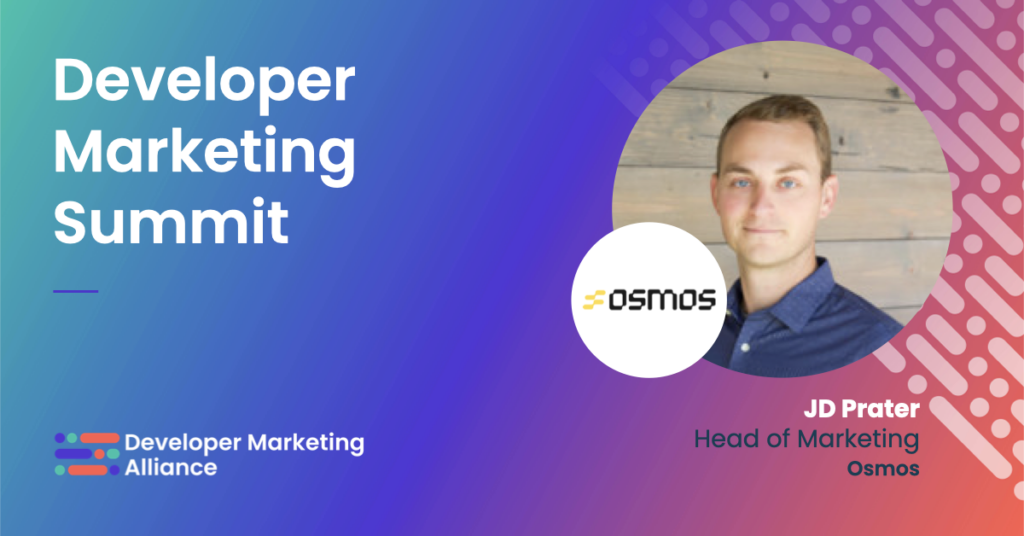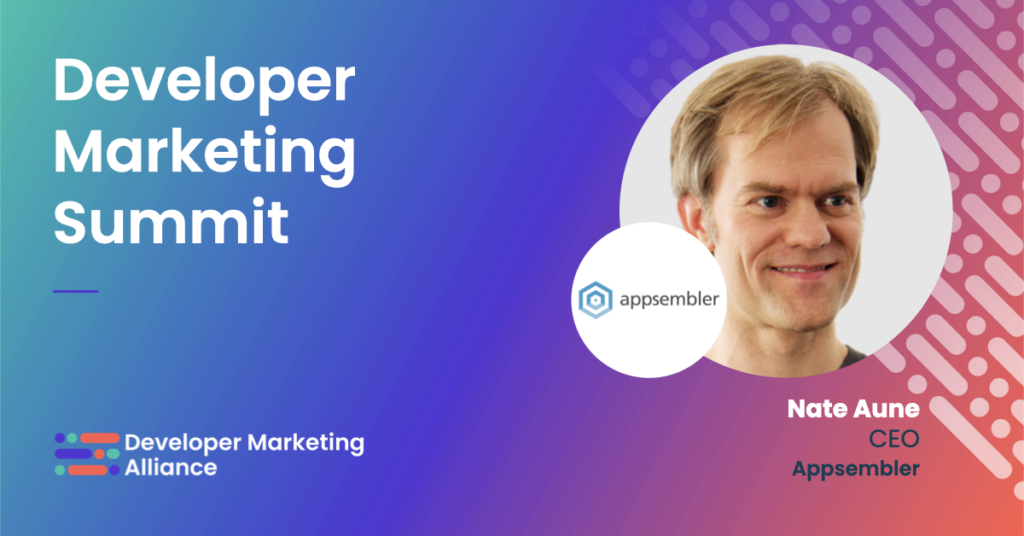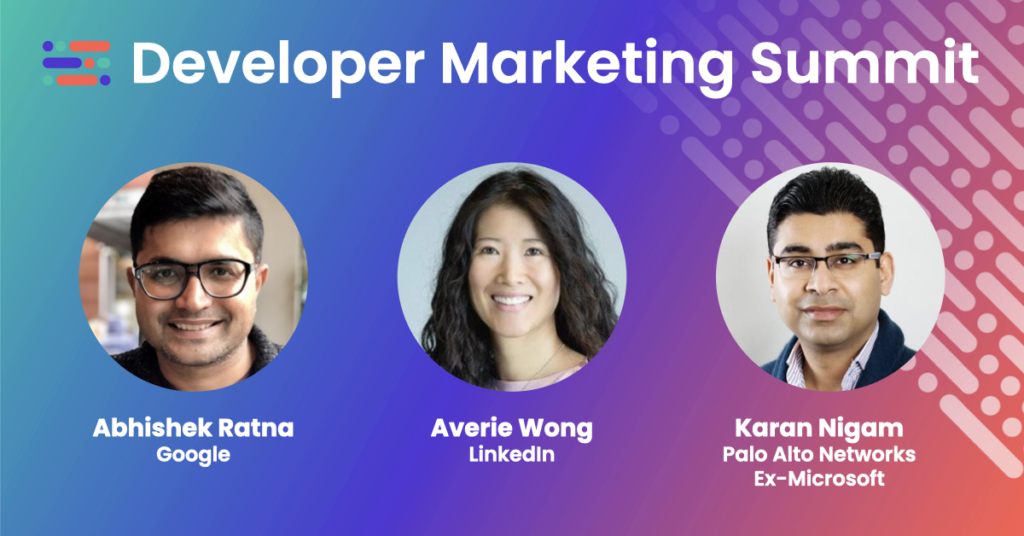Conferences are an important way of keeping up to date with the latest trends and developments in any industry. The PMA’s Developer Marketing Summit — which took place at the start of March — provided a wealth of information and insight into how to market your product to a developer audience.
We attended most (but not all) of the conference’s sessions and our CEO, Nate Aune, also gave a talk on Successful Developer Education (a write-up on that is coming!).
For readers who were unable to attend the summit, however, we summarized the key points from each session below and provided links to watch the full sessions online. You can learn about topics such as defining meaningful goals, creating successful developer education programs, setting up user profiles, and building a developer marketing go-to-marketing playbook.
Get Into the Developer Mindset
Liz Moy, Enterprise Developer Evangelist at Twilio
Liz Moy’s session focused on the who, what, where, and why you want to approach a developer. Here are her key points:
Who: Use surveys to understand developer demographics, NPS to track developer satisfaction, and a CRM specifically for your developer community.
What: Documentation is the most important content offering, but you should also provide free trials, and think about how you can make developers’ lives easier by helping them learn about how to solve problems outside of your product.
When: Speak to your Solutions Engineers and Developer Evangelists regularly, as these conversations can become a reliable source of insight into what they’re seeing in the front-line. They have a wealth of knowledge of use cases about what developers are doing with your product.
Where: Diverse developer experience and backgrounds mean marketing channels and tone vary widely. A developer with 1-2 years’ experience will want something different versus a developer with 10-20 years’ experience. Take the time to understand your developer community’s demographics and build content with them in mind.
Why: Go to sites where developers hang out – such as Reddit or Hacker News – to figure out what they like or don’t like about your product and competitive products. Also remember to look at what developers are doing with your product, not just what they’re saying about it.
What Success Looks Like in DevRel: Define Meaningful Goals
Mario Vivani, Head of Developer Evangelism (Worldwide) at Amazon

Measuring success in developer relations DevRel is tricky. According to Mario Vivani, the goal is to connect marketing activity with developer product adoption, but the majority of companies can’t do that.
Instead, Vivani recommends building a body of evidence to demonstrate the correlation between activities and results. Building this body of evidence will allow you to work out what levers developer evangelists control that improve product adoption. And by building a dashboard that measures levers and adoption over a sensible timeframe (remember, product adoption periods vary widely from product-to-product), you can determine which levers your team can control to increase developer adoption of your products.
Starting at Zero: Introducing a New Technical Audience to Your Company by Crafting Stellar User Profiles
Jess Petrella, Group Product Marketing Manager at Unbounce

In Jess Petrella’s session, she explained the concept of personas and their benefits for developer marketing, such as:
- Improving the developer experience
- Tailoring developer community and education initiatives
- Optimizing comms channels and messaging
Petrella also walked us through how to create a persona using a 3-step process of researching, defining, and finally segmenting.
5 Strategies to Include in Your Developer Go-to-Market Playbook
JD Prater, Head of Marketing, Osmos

JD Prater walked us through his developer go-to-market playbook. Broadly, this playbook included:
- How to define your target market(s)
- How to create audience segments
- How to evaluate target segments
- How to position your product to win, and
- How to create a marketing mix plan
Prater explained the tools and strategies you can use to carry out these actions. This included audience intelligence tools, the STP (segmenting, targeting, positioning) plan, and the developer customer journey.
One key takeaway from this session is that developers are very complex and potentially difficult to understand. They can be segmented into dozens of industries (software, SaaS, hardware, AI, IoT, etc.), programming languages, and vary widely in experience levels. But they all have something in common: they want to learn.
Successful Developer Education: Who Has Done It & What Does It Look Like?
Nate Aune, CEO, Appsembler

Our CEO, Nate Aune, explored the topic of developer education, focusing on:
- Why developer education is important
- What we can learn from companies that have successfully implemented developed education initiatives
- How you can launch or improve your developer education program
Aune looked at the tools you can use to build your developer education program, including:
- Hands-on product labs that provide a sandbox environment of your product so developers can directly experience its value
- Self-paced courses and tutorials that focus on helping developers learn about the industry and how to overcome their problems, not just your product
- Interactive developer documentation with quizzes, code grading, and sample code
The final part of this session focused on using telemetry to measure the success of your developer education programs and find areas where you can improve these initiatives. By using your data to build rich developer profiles, you can better tailor your content to meet the needs of your audience.
Note: A more in-depth write-up of Nate’s session is coming, so stay tuned for that!
How to Build & Engage Developer Communities
Nisha Baxi, Mercy Orangi, Sara Rosso & Mike Stowe
Gong, Shopify, HubSpot & RingCentral

In this session, these four developer marketing experts discussed the importance of communities to developers. They noted that developer communities are different from other communities, and the places where you need to engage developers are always changing. Technology is not the barrier to entry when it comes to reaching developers; it’s about keeping up with where they are spending their time.
They also explained that you need to remember that the community belongs to the developers. The developer community does not belong to you or your company. So ask developers what they need and what you can do for them, not vice versa. Do they need content, speakers, advice, video equipment (to stream themselves coding), or something else?
When it comes to measuring success, it’s easy to forget that the purpose is to add value to the community, not generate ROI. Some communities might be measurable for awareness (but not monetization), while other communities might be measurable for efficiency metrics, but not something else.
Scale to Succeed: Running Platform Marketing Programs at Enterprise-Scale
Abhishek Ratna, Karan Nigam & Averie Wong
Google, Palo Alto Networks & LinkedIn

This session focused on the benefits of platform marketing and leveraging marketing capabilities from users and communities. The metrics you can use to measure platform marketing include:
- Pipeline coming from your ecosystem of developers
- Help and engagement from your ecosystem
- # of developers
- # of apps published by ecosystem developers
- Developer satisfaction (CSAT, NPS)
These platform marketing experts also discussed the tools you can use to add value to developers so that they promote your product in their communities, including giving them access to your product roadmap and beta code. Companies should not forget about brand marketing as most developers want to align with companies/products that represent a bigger movement or have passed the test of time.




